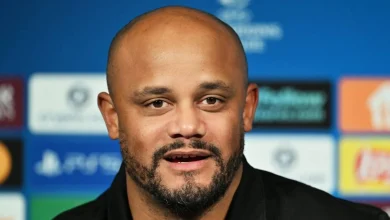The Wanamaker Building is turning into a film theater for the spooky season

Ghostly films will meet ghosts of department stores past in a pop-up film series leading up to Halloween. Film historian and former Inquirer film Carrie Rickey has curated five silent films from the 1920s to be shown at the Pipe Up! series in the Wanamaker Building — each one accompanied by live organ.
Among the films being screened are Robert Wiene’s The Cabinet of Dr. Caligari (1920) and F.W. Murnau’s Nosferatu (1922) and Faust (1926).
“What was scary a century ago when the great German filmmakers invented these templates of the modern horror movie aren’t exactly spine-tingling today,” said Rickey. “But they are creepy, in the manner of folk and fairy tales — and artists like Hieronymus Bosch. They get under the skin. And they’re inventive.”
Also being shown are two lesser-known Swedish films: Victor Sjöström’s The Phantom Carriage (1921) — “a huge influence on Ingmar Bergman,” says Rickey — and Häxan (1922), Benjamin Christensen’s film purporting to be documentary.
“It hypothesizes what medievalists called possessed nuns and black sabbaths, and what Freud would call female hysteria. It is the earliest example of goth horror that I’ve ever seen,” Rickey said.
The screenings are scheduled to take place in the Wanamaker Building’s Greek Hall, which means the musical accompaniment will be played on an instrument that gets considerably less attention than the one in the Grand Court.
That smaller instrument is a theater organ, a restored 1929 Wurlitzer originally from the Fox Theatre in Appleton, Wis.
“It’s pristine, it hasn’t been fooled with like a lot of Wurlitzers,” said Friends of the Wanamaker Organ president Ray Biswanger. “It’s got a lot of color in it and represents well the experience of hearing a silent movie.”
Organists have different approaches to scoring silent film, said Peter Richard Conte, the Wanamaker Grand Court Organist who is playing two of the five nights. His method is to watch the film 10 to 15 times, prepare a cue sheet, and play leitmotifs (recurrent themes) for various characters and places.
“And you just watch the film like a hawk and improvise,” he said.
Conte tends to avoid tucking in popular tunes or familiar musical references. “It distracts from the film. It can be cute and occasionally I will do it, but almost like a joke. What you want to do is disappear. If the audience forgets that you’re there,” Conte says, “that’s the biggest compliment I can get.”
The lineup: Monday, “Faust,” organist Ian Fraser; Tuesday, “The Phantom Carriage,” organist Don Kinnear; Wednesday, “Nosferatu,” organist Peter Richard Conte; Thursday, “The Cabinet of Dr. Caligari,” organist Peter Richard Conte; Friday, “Häxan,” organist Don Kinnear.
Screenings begin at 7 p.m. at the Wanamaker Building, 1300 Market St. Admission is free with advance registration. operaphila.org.
Conte will also perform on the Grand Court Organ for a live-to-screen presentation of the 1925 film “The Phantom of the Opera,” Nov. 10 at 7 p.m. The event is free and requires no advance registration.





